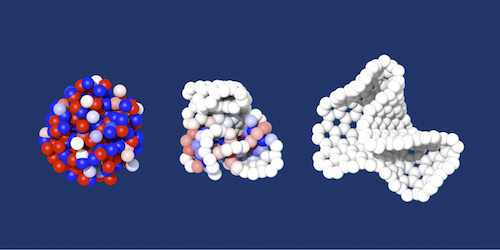Extra Dimensions Give Optimization a Boost
The way atoms arrange themselves into structures determines the physical properties of matter. Carbon as graphite, for instance, is opaque and soft, while as diamond it is transparent and hard. These different structures are stable because they are the lowest-energy states in the landscape spanned by all possible configurations of carbon. Identifying those states in general for a given combination of atoms is a challenging optimization problem. Chris Pickard at the University of Cambridge, UK, and Tohoku University, Japan, now shows that performing the optimization in higher spatial dimensions greatly accelerates the process.
The computation of stable atomic structures starts with an initial configuration in the landscape and then moves in steps to nearby configurations that successively lower the energy. But local energy minima can “trap” the search algorithm, preventing the descent to lower-energy configurations. Previous tricks to avoid these traps either assumed some knowledge of the configuration space or required some preparation of the initial structures. Pickard instead proposes to let the atoms move in a hyperspace with more spatial dimensions than the physical system possesses, which allows trajectories that circumvent the traps. Then, to confine the computed structures to the physical space of the system, an energy penalty for trips in the extra dimensions is increased.
Pickard performed optimizations for clusters and networks containing up to 207 atoms and showed that his approach could find lowest-energy structures for these systems. For the most difficult structures, the computation time was two orders of magnitude shorter compared to otherwise identical nonhyperspace optimization. Pickard says his method could be applied to a variety of problems, such as the packing of extended and irregular objects.
See here for an animation showing a cluster of atoms moving through different configurations.
This research is published in Physical Review B.
–Nicolas Doiron-Leyraud
Nicolas Doiron-Leyraud is a Corresponding Editor for Physics.





